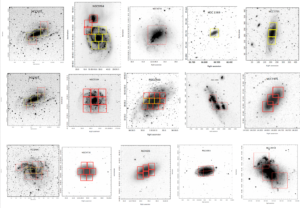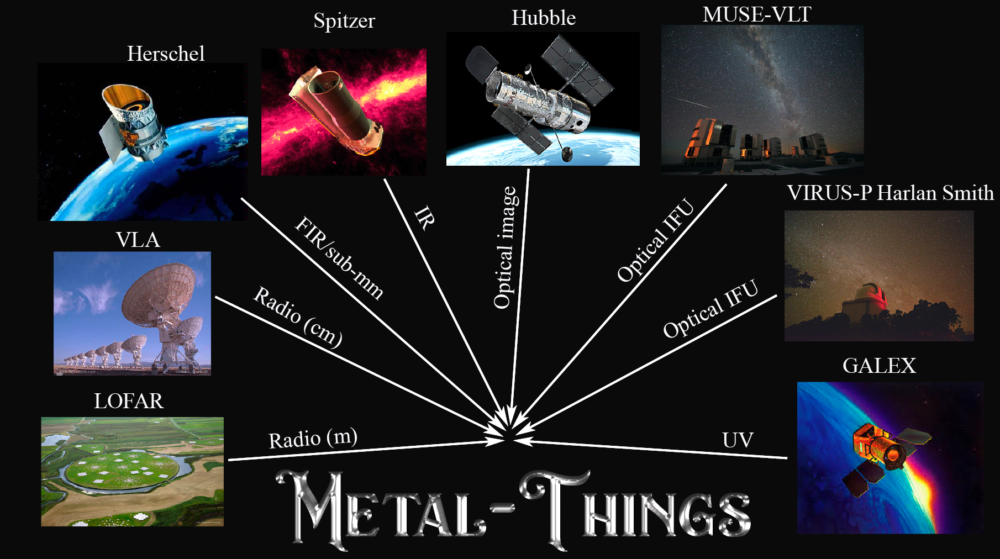Metal-THINGS is a survey of nearby galaxies that is obtaining resolved (IFU) spectroscopy of a set of 35 galaxies. One of the unique strengths of this survey is the spatially well-resolved data across the entire electromagnetic spectrum, from X-rays to radio, including data from the Hubble and James Webb Space Telescopes. The Metal-THINGS survey aims to identify the main drivers in the evolution of galaxies by combining information at multiple wavelengths.
Due to the nearby nature of our galaxies, we are able to analyze particular objects. For instance, in Lara-López et al. (2021) we analyze Ultra Luminous X-rays sources (ULX, strong X-rays sources of unknown origin) in NGC 925. Interestingly, we found that one of the ULXs in this galaxy shows a very low gas metallicity in its vicinity, where such environment favors much higher accretion rates.
Another feature we can identify are “holes” in maps of HI gas. In Lara-López et al. (2023) we analyzed previously identified HI holes in the “Fireworks galaxy”. We find that the supernova remnants (SNRs) in this galaxy are concentrated at the rims of the HI holes. Furthermore, our data shows that the star formation is enhanced at the rims of the holes, most likely due to the compression of gas from the multiple supernovae explosions.
One of the objectives of Metal-THINGS is to combine the rich multiwavelength information available for these galaxies. In Garduño et al. (2023) we accomplished this by using the IFU data from Metal-THINGS, neutral gas from THINGS, molecular gas from CARMA, and dust from DustPedia. This allowed us to analyze multiple scaling relations for NGC 1569, improving our understanding of irregular galaxies.
Finally, Comeron et al. (2023) reported the galaxy NGC 1277 as dark matter deficient. NGC 1277 is considered a prototype “relic galaxy” which means a galaxy which has had no interactions with its neighbours. Galaxies of this type are rare, and considered to be the remnants of giant galaxies which formed in the early Universe. From the IFU spectra kinematic maps, they found that there cannot be more than 5% of dark matter in NGC 1277.


